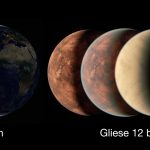Key Takeaways:
- Our sun has been orbiting the Milky Way’s black hole heart for approximately 4.6 billion years.
- It takes the sun around 230 million years to complete one orbit around the Milky Way.
- The sun’s orbital pathway has likely changed over time due to radial migration, meaning it has been flung through the Milky Way more times than previously estimated.
- Other stars in the solar neighborhood have also experienced radial migration, with approximately half being pushed outward from their birthplaces.
- While the sun is currently in a fairly stable orbit, it’s possible it may continue to migrate outward, though the extent of this movement cannot be predicted.

The idea that Earth is moving through space can be difficult to understand. But it is even stranger to realize that you are making two simultaneous journeys — around the sun and through the Milky Way.
Just like the moon orbits Earth and our planet orbits the sun, our home star is also circling the Milky Way — or, more accurately, orbiting the supermassive black hole at the center of our galaxy. The entire Milky Way is actually constantly spinning around our galaxy’s black hole heart.
The question is, how many times has our solar system rotated around the massive black hole at the center of the Milky Way? It’s not as easy to figure out the answer as it sounds at first.
Compared with the orbits of the planets around the sun, our home star’s pathway through the Milky Way is inconceivably longer and much less stable, which makes it hard to calculate how many times we have rotated around the galaxy’s center.
The length of time it currently takes for the solar system to travel around our galaxy can be found using basic math, and this information can help determine how many times our cosmic neighborhood has traveled through the galaxy. But it’s difficult to give a more precise response.

According to Space.com, the sun and the rest of the solar system are currently moving through our galaxy at a speed of about 448,000 mph (720,000 km/h). Though it may seem unreal, some stars in the Milky Way—referred to as hypervelocity stars—can travel through the galaxy at up to 5.1 million miles per hour (8.2 million kilometers per hour).
Our home star takes about 230 million years to make one orbit around the Milky Way at the speed at which it is currently traveling. That is over 750 times longer than the history of humans and longer than the dinosaurs walked the planet.
According to The Planetary Society, the sun is approximately 4.6 billion years old, and Earth was formed about 100 million years afterward. This indicates that, had the sun’s orbital path remained unchanged for the entire period, it would have made about 20 orbits around our galaxy, with Earth being pulled along for about 98% of those orbits.
Nevertheless, during its lifetime, the sun’s orbit has changed. Rather, since it first formed, our home star has probably moved around a lot.
According to Victor Debattista, an astrophysicist at the University of Central Lancashire in the United Kingdom who studies galactic evolution, “the sun was probably not born where we find it now,” Live Science reported. Rather, he continued, our home star was most likely born much closer to the Milky Way’s center.
Approximately 26,100 light-years separate us from the galactic center at this time. But the metallicity, or chemistry, of our sun suggests it was born around 16,300 light-years from the galactic core. Known as “radial migration,” this outward motion is caused by the momentum of the rotating limbs of galaxies, such as the Milky Way, pushing stars along their spiral arms — similar to “how a surfer rides a wave,” according to Debattista.
When the sun was born, its orbital period was much shorter. According to Debattista, our star probably needed 125 million years to make a full circle. As the sun migrated outwards, its orbital period increased, but it likely took billions of years to move to its current position, he added.
It’s unclear how much more the sun has actually been flung through the Milky Way than our previous estimate indicated, but this indicates that it has happened more frequently.
Many other stars also experience radial migration. “Roughly half the stars in the solar neighborhood are thought to have been born elsewhere [and been pushed outward],” Debattista said. Additionally, he noted that the proportion of stars that have migrated outward increases with distance from the Milky Way’s center.
The sun is now believed to be in a fairly stable orbit around our galaxy. However, it’s possible that it’s still moving a little bit.
According to Debattista, it is “certainly possible” that the sun will keep moving outward. “However it is impossible to predict by how much.”


